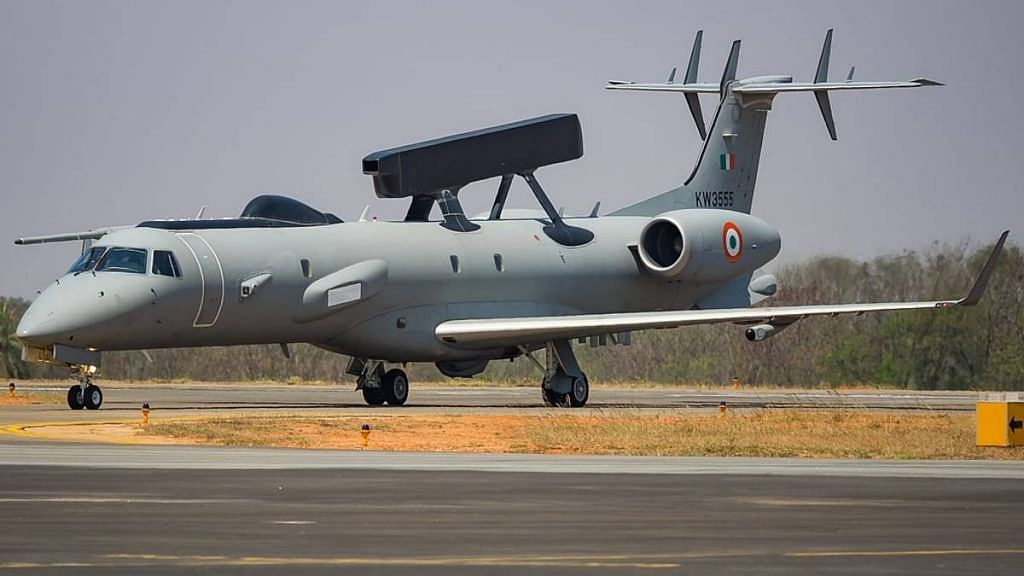New Delhi: In a bid to bridge a critical gap in India’s defence preparedness, the government Thursday sanctioned a Rs 10,994-crore project to develop six new Airborne Early Warning and Control (AEW&C) planes for the Indian Air Force, which will act as the “eyes in the sky”.
The defence minister-chaired Defence Acquisition Council (DAC) also approved the Navy’s proposal to acquire ship-launched, unmanned aerial systems for Rs 1,000 crore which will allow the force to have a better maritime knowledge while on the move.
A statement by the defence ministry said capital acquisition proposals of various weapons, platforms, equipment and systems required by Army, Navy and Air Force at an approximate overall cost of Rs 28,000 crore had been sanctioned.
It added that six of the seven proposals — Rs 27,000 crore of Rs 28,000 crore for which AoN (Acceptance of Necessity) were granted — will be sourced from the Indian industry to give a boost to the ‘Make in India’ and ‘Atmanirbhar Bharat’ initiatives.
“Acquisition proposals approved today include the DRDO designed and developed AEW&C Systems for the Indian Air Force, Next Generation Offshore Patrol Vessels for the Indian Navy and Modular Bridges for the Indian Army,” the statement said.
Also read: India working on next ‘Astra’ missile with 160 km range as Mk1 is integrated in IAF & Navy
Eye in the sky
AWACS or AEW&C act as the ultimate eyes in the sky because they can detect and track incoming fighters, cruise missiles and drones faster than ground-based radars, and also act as an aerial control room for missions while keeping track of ships out at sea.
Sources in the defence and security establishment said aircraft for the AEW&C will be acquired from the Air India fleet, which means they will be A-319s and A-321 variants.
According to the original plan, the AEW&C systems were to be put on two larger A-330 wide body jets that were to be procured from Airbus.
However, now the six Airbus aircraft will be modified and the indigenous Active Electronically Scanned Array (AESA) radar will be mounted on them.
Sources said the DRDO’s Centre for Airborne Studies lab is executing the Block-2 project, which will be more advanced than the existing systems.
While the IAF has three Israeli Phalcon AWACS on Ilyushin-76 transport aircraft, and two indigenous ‘Netra’ AEW&C aircraft, the aerial duel between India and Pakistan on 27 February last year showed that there was critical need for more.
Pakistan, which has six of the Saab 2000 early warning aircraft besides four others, had taken advantage of the changeover of the IAF’s eye in the sky when launching the attack.
The current standoff between India and China has also meant that the existing assets are being put to use almost round-the-clock and the need for more has been felt.
Also read: Not much has changed for IAF a year after it was outgunned by Pakistan
